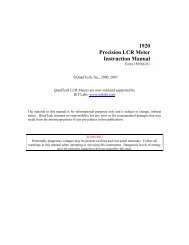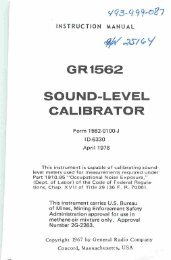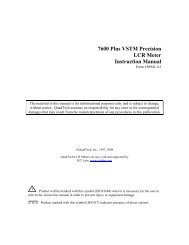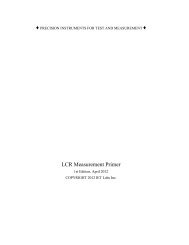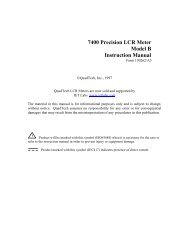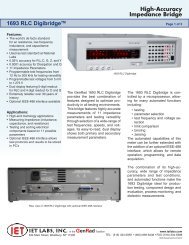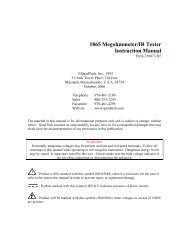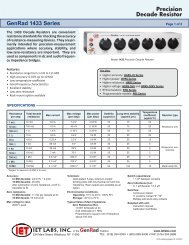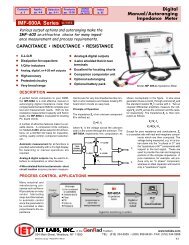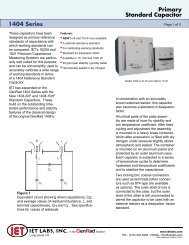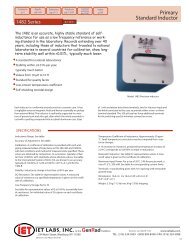Handbook of High Speed Photography - IET Labs, Inc.
Handbook of High Speed Photography - IET Labs, Inc.
Handbook of High Speed Photography - IET Labs, Inc.
You also want an ePaper? Increase the reach of your titles
YUMPU automatically turns print PDFs into web optimized ePapers that Google loves.
5.3.2 OTHER SIGNAL PROCESSING DEVICES. If only one or two<br />
simple processes are needed to modify the signal for use with a par<br />
ticular stroboscope, it will probably be most economical to build a<br />
device suited to the particular situation faced by the photographer.<br />
For example, only a contact closure may be available to trigger the<br />
1531 Strobotac which requires a contact-opening signal with zero delay.<br />
A simple inverting circuit will be required, such as that diagrammed in<br />
Figure 5-10. The necessary parts can be purchased for less than $2.00,<br />
and only a few minutes are required to assemble them. Contacts in<br />
camera shutters equipped for X synchronization normally operate satis<br />
factorily with this circuit, but some difficulty may be experienced if<br />
the contacts bounce when closing. A small capacitor (around 0.01<br />
micr<strong>of</strong>arad) connected externally across the contact terminals usually<br />
solves this problem.<br />
TO SHUTTER OR<br />
SWITCH CONTACTS<br />
1<br />
TO STROBOTAC<br />
INPUT JACK<br />
B - 12-volt (or greater) battery<br />
Ra» Rb ~ 1-megohm, J4-watt carbon resistors<br />
S - SPST ON-OFF switch<br />
Cs - Optional capacitor to prevent<br />
multiple triggering from contact<br />
bounce. Start with about 0.01 £iF<br />
(100 V, dc) and increase capaci<br />
tance until only one flash is trig<br />
gered from each contact closure.<br />
Cp - 0.01 /iF, 100-voIt capacitor<br />
NOTE:<br />
Set RPM dial fully clockwise.<br />
Figure 5-10. Circuit for triggering the Strobotac by a contact<br />
closure with minimum time delay.<br />
The internal delay characteristics <strong>of</strong> the General Radio Strobo<br />
tac electronic stroboscopes can be used to introduce a variable delay<br />
between a negative or contact closure input signal and the flash. This<br />
method <strong>of</strong> obtaining a time delay, however, is not time stable and may<br />
introduce appreciable time jitter ; for this reason, use <strong>of</strong> the Flash De<br />
lay is preferred. The delay varies from approximately 20 milliseconds<br />
with the RPM dial fully counterclockwise to 300 milliseconds with the<br />
dial at a point approximately 90° away from fully clockwise. As the<br />
RPM dial is swept past this point, the flash will fire without being ex<br />
ternally triggered. At the full clockwise end <strong>of</strong> the dial, zero delay<br />
will occur. These flash-delay characteristics are summarized in Figure<br />
5-11.<br />
It is usually necessary to provide phase adjustment within the<br />
picture-taking system, so that the subject is in the proper position<br />
when the lamp is fired. The easiest way to do this is to use a device<br />
52



